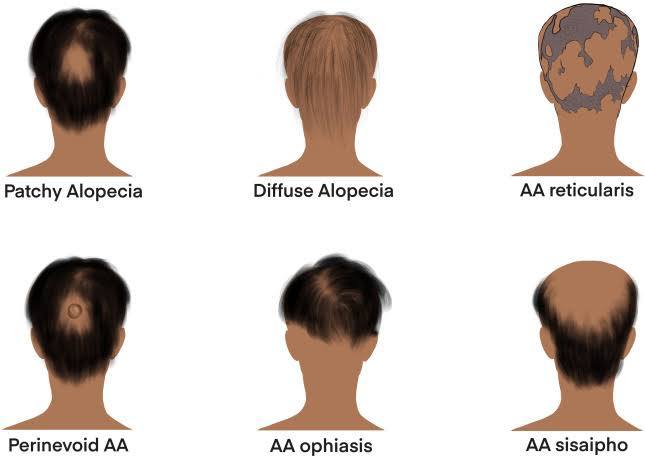
Alopecia can affect your entire body or simply your scalp, and it can be temporary or permanent. It could be caused by inheritance, hormonal changes, medical issues, or simply ageing. Men are more likely than women to lose hair on their heads.

Excessive hair loss from the scalp is commonly referred to as baldness. The most common cause of baldness is hereditary hair loss as people become older. Some people may rather leave their hair loss untreated and unnoticed. Hairstyles, cosmetics, caps, and scarves may be used to conceal it. Others choose for one of the available treatments to prevent additional hair loss or to restore hair growth.
Hair loss can manifest itself in a variety of ways, depending on the cause. It might strike abruptly or gradually, and it can affect your entire body or just your scalp.
Hair loss can manifest itself in a variety of ways.
On top of the skull, there is a gradual thinning. This is the most prevalent form of hair loss, which occurs as people become older. Hair begins to recede near the hairline on the forehead in men. In most cases, women’s hair has a broadening of the part. A receding hairline is an increasingly common hair loss trend in older women (frontal fibrosing alopecia).
Bald areas that are round or spotty. On the scalp, beard, and brows, some people lose hair in circular or spotty bald areas.
Hair loss that occurs suddenly. Hair might loosen as a result of a physical or mental trauma. When combing or washing your hair, or even after light tugging, a few strands of hair may fall out. Hair thinning is common with this form of hair loss, although it is only temporary.
Hair loss all over the body. Hair loss can occur as a result of some medical diseases and treatments, such as chemotherapy for cancer. Hair normally regrows on its own.
Scaling patches that extend throughout the scalp. This is a ringworm symptom. Broken hair, redness, swelling, and leaking are all possible symptoms.
Prevention
Genetics is to blame for the majority of baldness cases (male-pattern baldness and female-pattern baldness). This form of hair loss cannot be avoided.
These suggestions may help you avoid hair loss that is preventable:
Take care of your hair. When brushing and combing your hair, use a detangler and prevent tugging, especially if your hair is wet. A wide-toothed comb can help prevent hair from being pulled out. Hot rollers, curling irons, hot-oil treatments, and permanents should all be avoided. Rubber bands, barrettes, and braids can cause a lot of tension on your hair.
Inquire with your doctor about any medications or supplements you’re taking that could be causing hair loss.
Protect your hair from UV rays from the sun and other sources.
Quit smoking. According to several research, there is a link between smoking and baldness in men.
Hope it helps!








